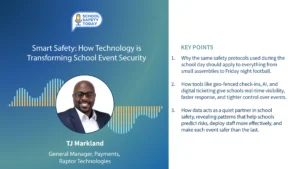Will the Future of Schools Include Flexible Scheduling?
Celebrating the leaders and experts that are powering education into the future, host JW Marshall sets out to ask the “right questions” in EdTech to understand the changes in policy and technology that will power our universities, tradeschools, and companies – and drive growth in upskilling certifications.
The original flex time in school was study hall, but there have been many changes to that model. Now schools are more intentional about these periods, and it continues to evolve. Talking about flex time and its future, Voices of eLearning host JW Marshall spoke with James Bacon, Director of Outreach and Operations for Edficiency. Edficiency offers easy software that allows districts to simplify scheduling and logistics around flex time.
Bacon began his career as a teacher, moved into coaching teachers, and then became part of the EdTech space.
“Time is the most valuable resource we have with kids. Not all kids get the same thing out of a lesson or learn at the same rate. Ideally, we want to bring kids together with teachers that need more time together.”
Bacon started the chat with this important perspective. “Time is the most valuable resource we have with kids. Not all kids get the same thing out of a lesson or learn at the same rate. Ideally, we want to bring kids together with teachers that need more time together.”
Purposeful flex time was becoming the norm; then everything went virtual. While schools were scrambling to get online learning going, they didn’t forget about flex time; the logistics behind it changed. “Students need more one-on-one time, and now schools are offering online options for kids to connect with teachers,” Bacon said.
Flex time is not a one-size-fits-all, and Bacon thinks it’s heading more toward personalized learning. It’s also about letting students own their own time and can bridge the gap with learning loss.
Bacon also shared some examples and success stories. One illustrated a new take on homerooms. “They wanted to do more with this time but were bogged down by logistics. They kept students in the same room. They had a paradigm shift in their program, matching students with one advisor throughout high school. Their attendance improved, test scores rose, and 96% of students really valued the flex time.”










